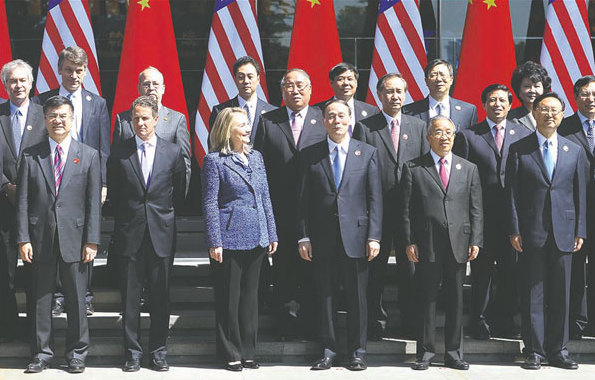Facts about the China-US Strategic and Economic Dialogue
Updated: 2013-07-10 10:58
(China Daily)
|
||||||||
|
Participants to the fourth China-US Strategic and Economic Dialogue take a photo on May 23, 2012 in Beijing. Xu Jingxing / China Daily |
The China-US Strategic and Economic Dialogue (S&ED) was established in April 2009 by then Chinese President Hu Jintao and US President Barrack Obama. It provides for a bilateral forum at the highest levels to discuss a broad range of issues between the two countries. The dialogue is seen as an essential step toward advancing a positive, constructive, and comprehensive relationship between the sides.
The first round of S&ED was held in Washington, DC on July 27-28, 2009. Chinese Vice-Premier Wang Qishan and State Councilor Dai Bingguo together with US Secretary of State Hillary Rodham Clinton and Treasury Secretary Timothy Geithner co-chaired the two days of talks. President Hu sent a congratulatory message read by Wang. The theme was "building confidence to restore economic growth and strengthen China-US economic cooperation" and representatives discussed an agenda that included bilateral relations and various regional and global issues.
Round two of S&ED was held in Beijing on May 24-25, 2010. Chinese Vice-Premier Wang Qishan and State Councilor Dai Bingguo again together with US Secretary of State Hillary Rodham Clinton and Secretary of the Treasury Timothy Geithner co-chaired the two-day event. Discussions centered on ensuring sustainable development, mutually beneficial, win-win economic and cooperative partnerships, and an agenda that included energy security, climate change, UN peacekeeping and anti-terrorism.
The same four officials again co-chaired round three of S&ED, which was held in Washington on May 9, 2011. For the first time, military delegates from both sides were invited to sit in on the discussions, which centered on ways to build a comprehensive and mutually beneficial economic partnership, including trade and investment, financial system reform, and sustainable economic development. Conversations also ranged to the global economy, Europe's debt crisis, the Middle East and North African, and Japan's natural disasters.
Back in Beijing for round four of S&ED on May 3-4, 2012, with Wang, Dai, Clinton and Geithner again presiding, discussions focused on three major economic and trade issues: promoting strong, sustainable and balanced growth; expanding trade and investment opportunity; and encouraging financial market stability and reform.
The fifth round of S&ED, scheduled to be held in Washington on July 8-12, 2013, was announced by newly sworn-in US Secretary of State John Kerry during a news briefing in April after he met with Chinese leaders during his first Beijing trip since taking office in February. The gathering will be co-chaired on the Chinese side by Vice-Premier Wang Yang and State Councilor Yang Jiechi. The US will be represented by Kerry and Treasury Secretary Jacob Lew. Both sides will have large delegations representing various government agencies. Chinese Ambassador to the US Cui Tiankai said on Sunday that a wide range of issues will be addressed, including cyber security, climate change, and Asia-Pacific economic cooperation.
- China.org.cn
(China Daily USA 07/10/2013 page16)
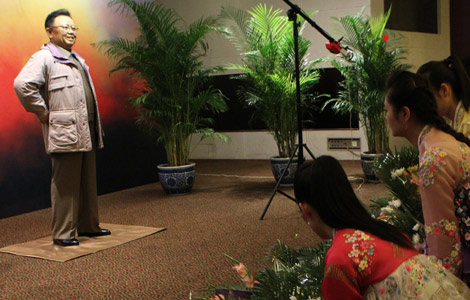
 China donates wax figure of Kim Jong-il to DPRK
China donates wax figure of Kim Jong-il to DPRK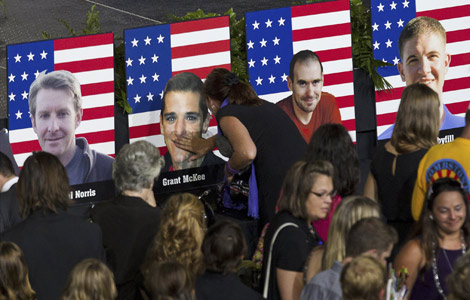
 Thousands pay final tribute to US firemen
Thousands pay final tribute to US firemen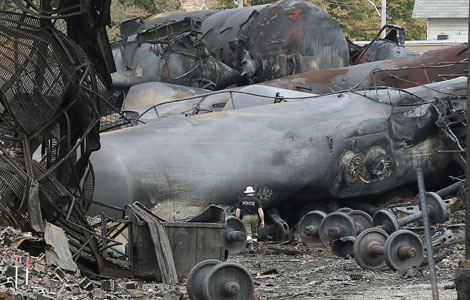
 Dozens feared dead in Quebec derailment
Dozens feared dead in Quebec derailment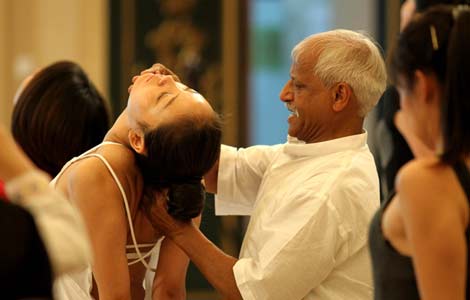
 Breathe deep, this is the real thing
Breathe deep, this is the real thing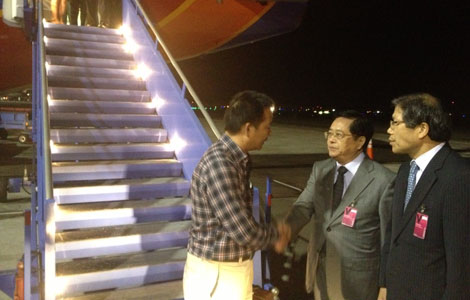
 Families of crash victims in SF
Families of crash victims in SF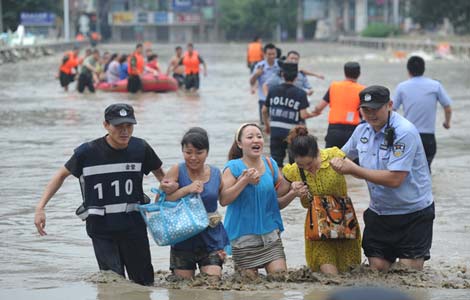
 Rainstorms cause severe flooding and landslides
Rainstorms cause severe flooding and landslides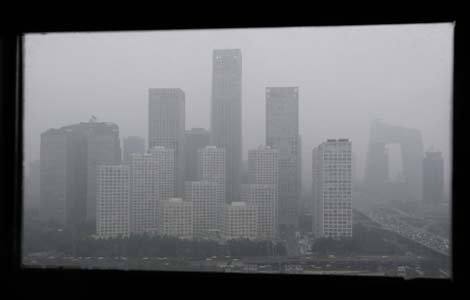
 Coal burning in China's north can shorten lives
Coal burning in China's north can shorten lives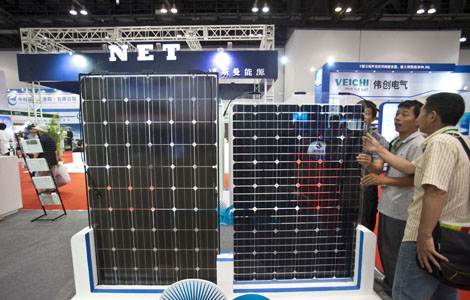
 Some solar companies see brighter first half
Some solar companies see brighter first half
Most Viewed
Editor's Picks
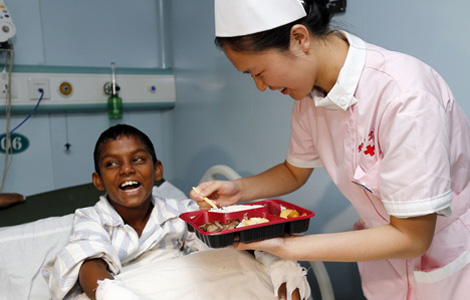
|

|

|

|

|
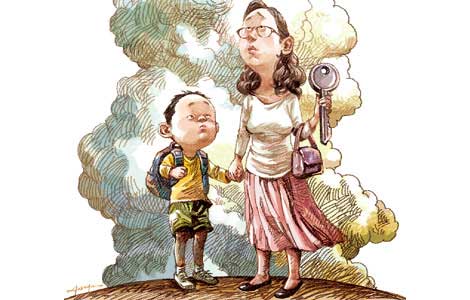
|
Today's Top News
Pilots in air crash relied on automatic equipment
Chinese companies could face US delisting
High-level China-US talks to kick off
Watchdog: Trans-fat levels meet standards
IMF cuts China's, world's growth
Most passengers on crashed plane reported safe
Shenzhen Red Cross denies organ claim
Rainstorms cause severe flooding and landslides
US Weekly

|

|
